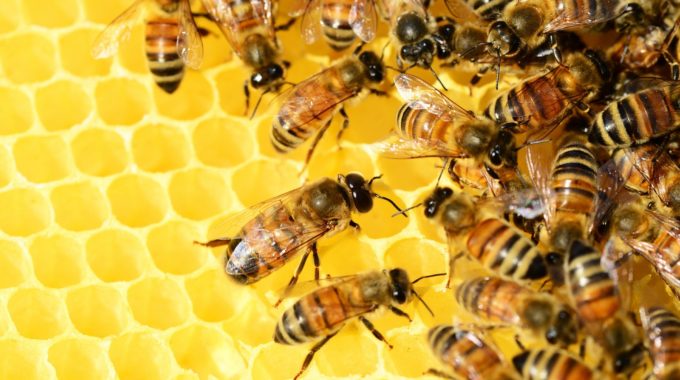Hive mind: protecting our honey bees
How much we owe to the humble honey bee! Honey bees play a significant role in the pollination of food crops in Australia. Some crops are almost entirely reliant on honey bees for pollination. The CSIRO estimates that one in every three mouthfuls of food that Australians eat relies on pollination support by honey bees. But now the Varroa mite, also known as the Varroa destructor – which has crippled bee colonies around the world – is threatening the viability of the Australian beekeeping industry.
The Varroa mite is a tiny mite that attaches itself to honey bees and honey bee brood (eggs). It has been killing honey bee colonies worldwide. Australia is the only populated country in the world that hasn’t been impacted by the Varroa mite. But experts predict that it’s only a matter of time before it establishes itself in Australia.
To support the viability of the Australian honey industry, Bega has launched the Purple Hive Project. This solar-powered, artificial intelligence-based device is trained to detect the Varroa mite in real time. So if it were to make its way into Australia, steps can be taken to prevent its spread. The launch coincides with Bega’s expansion into the honey aisle. The company has launched B honey, a 100 percent Aussie-owned, locally sourced honey.

We have the technology
“When we began to develop B honey, we realised the significant threat facing Australia’s honey industry,” explains Adam McNamara, Executive General Manager, Bega Foods. “It was clear to us that we needed to invest in technology and innovation. To support the future of our honey bees, Australian beekeepers and, in turn, Australian agriculture.”
The Purple Hive uses 360-degree camera technology and artificial intelligence to observe every bee entering the hive. It scans each bee to determine if Varroa mite is present. If a mite is detected, an alert will be sent instantly. This will allow for the hive to be quarantined to stop the spread of the mite immediately. Purple Hives can be placed at high-risk entry points around Australia to assist with early detection and monitoring.

Bees mean food
“The presence of the Varroa mite in Australia would cripple our honey bee populations,” says Ian Cane, Australian beekeeper and Purple Hive Project Advisor. “Once the Varroa mite is established, it’s highly unlikely that we will be able to eradicate it.
“This would not only impact Australian honey production, but also the food crops which rely on bees for pollination. Our nation’s food security is heavily dependent on honey bees.”
The Purple Hive Project will be a game-changer for what is currently a painstakingly manual detection process. Bega is now finalising the development of the Purple Hive. The long-term vision is that the project will create a network of hives located across Australia.
“Without prioritising the health of our honey bees and the ecosystems that rely on them, honey bees, as well as Australian food security, is under threat,” McNamara says. “By enjoying B honey, you’ll be supporting the Purple Hive Project. And in turn, our bees.”










